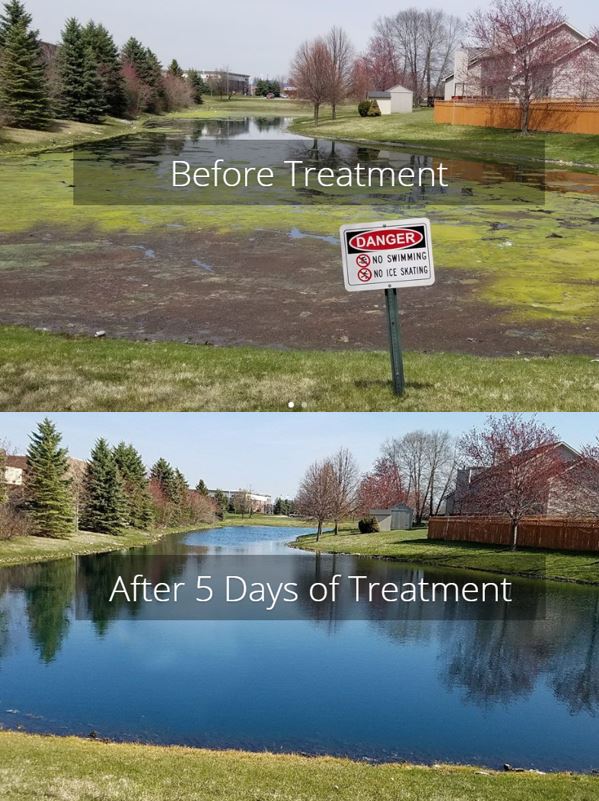
- Can be toxic and lead to death or illness in humans, pets, marine mammals, and other wildlife
- Can cause severe taste and odor issue in drinking water reservoirs
- Can make water unsafe for recreational use (swimming, fishing, boating)
- Can deplete oxygen levels and cause fish kill
Preventing Harmful Algal Blooms
A proactive approach can reduce the impact of the pollution and the chance of a HAB occurring while mitigating the risks associated with HABs. A management plan using Parklink’s probiotics for ponds and lakes improves water quality and reduces excess nitrogen and phosphorus before they saturate the water resource. The all-natural products keep the water safe and clean.
HABs Case Study
SUMMARY: A customer was experiencing harmful algal blooms and excessive aquatic plant growth in their stormwater ponds and lakes at their city parks. They were unable to keep up with the excess nutrients causing the blooms with a treatment program using algaecide alone. The city was receiving complaints from concerned residents about the HABs producing foul odors, causing fish kills, and limiting their ability to use the parks due to worries about possible toxins.
SOLUTION: Parklink helped evaluate the lakes and ponds and recommended a treatment program that included using probiotics and algaecides as a proactive approach to reduce excess nitrogen and phosphorus as they entered the water bodies and biocatalysts to improve the efficiency and effectiveness of their algaecides.
RESULTS: The city was able to gain and keep control of their stormwater ponds and lakes at its city parks. The concerned residents were able to enjoy the parks without having to worry about the HABs.

